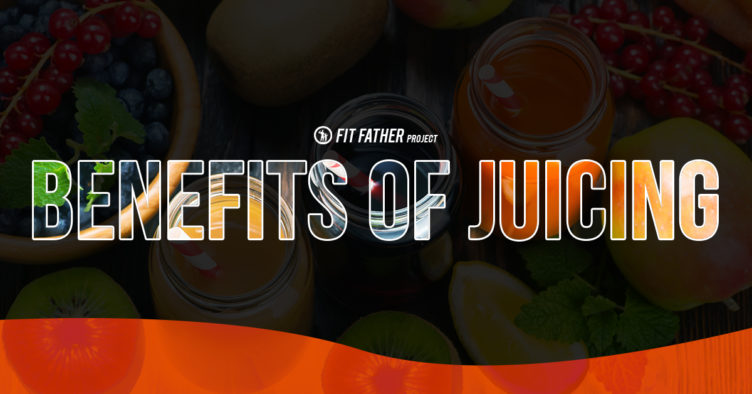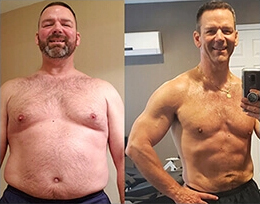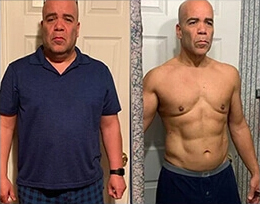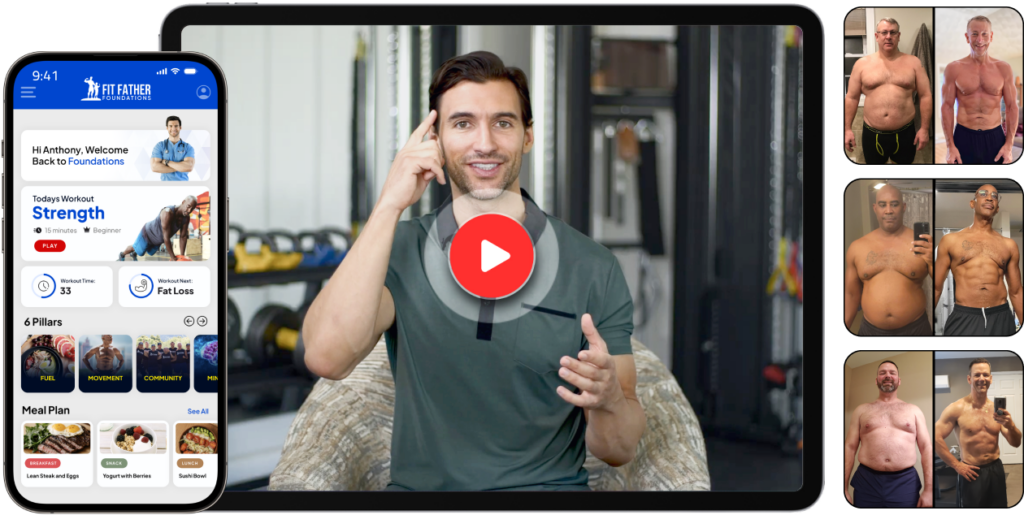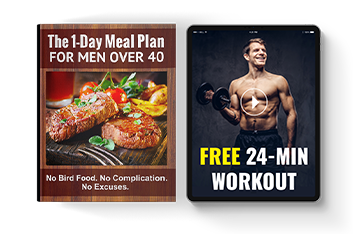There are numerous benefits of juicing, and it continues to be a popular health craze. But is juicing as healthy as it seems?
Juicing is a standard process of squeezing the juices out of fresh fruits, vegetables, or combinations of both.
You can easily juice foods if you have a juicer at home or purchase pre-packaged fruit or vegetable juices instead to save you time in the kitchen.
Juicing provides just the juices found in vegetables and fruits but omits its fiber-rich flesh.
To make homemade juices, wash fresh vegetables or fruits, put them in a juicer, power on the machine, remove the fresh-pressed juice, and enjoy!
But, there is a dark side to juicing that you should take note of.
Read on the learn more about the good, bad, and ugly (the REAL truth) about juicing!
Learn more about nutritional biochemistry and the best foods and supplements from Dr. Dan Gubler on The Fit Father Project Podcast!
The Benefits of Juicing
To take advantage of the benefits of juicing, drink juice in moderation or add juice to water, milk, or plant milk.
You might also consume whole fruits and veggies in addition to juicing, or blend fruits and vegetables into a smoothie to retain the fiber.
If you prefer drinking fruit and vegetable juice instead of eating whole fruits and veggies, add juice to your meal plan in moderation.
You might have juice with one or two of your meals or drink it as a snack between meals, rather than consuming juice in place of meals or often throughout the day.
According to the United States Department of Agriculture (USDA), a cup of 100% fruit or vegetable juice counts as one serving from these food groups.
There are many benefits of juicing that include:
Energy
Drinking fresh fruit and vegetable juices gives you a quick boost of energy from natural sugar. While juices contain simple sugars, these natural sugars are much healthier than added sugar and are loaded with energizing vitamins and minerals.
Satiety
Drinking juices increases satiety, which is the feeling of being full. Choosing fruit or vegetable juices, as long as you choose lower-calorie options, can fill you up from fewer calories and make it easier to lose excess body weight or maintain an ideal weight.
Micronutrients
Many people don't consume enough fruits and vegetables to meet the daily recommendations, which are 2 cups of fruits and 3 – 3 1/2 cups of vegetables daily when eating 2,500 calories per day.
While it lacks the fiber present in whole fruits and vegetables, juice contains many of the essential vitamins and minerals your body needs on a regular basis to function at its best.
Body Detoxification
To detoxify your body, it's important to drink plenty of fluids. Exercising regularly or sitting in a sauna are other effective ways to reduce toxin buildup within your body but drinking more water (or diluted juices) also enhances detoxification.
Diluting juices and drinking large amounts of fluids speeds up your body's natural ability to detox.
Healthy Weight Management
Drinking diluted or low-calorie fruit and vegetable juices is an excellent way to control your calorie intake for weight loss, especially if you drink juice before meals or in place of some of your meals.
However, some juices are higher in calories so choose lower-calorie fruits, vegetables, or diluted juices if juicing for weight loss is your goal.
Antioxidants
Fruits and veggies are loaded with vitamins and minerals, many of which are antioxidants that fight free radicals, illnesses, and chronic diseases.
Consuming a variety of 100% fruit juices, vegetable juices, or whole fruits and veggies is an excellent way to increase the antioxidant content of your menu!
The Dark Side of Juicing
Juicing offers numerous benefits when used in moderation, but potential drawbacks exist if you drink too much juice in place of a well-balanced meal plan that's rich in whole foods.
Possible negative effects associated with drinking too much juice include:
Sugar
Natural sugar found in 100% fruit and vegetable juice is healthier than added sugar, but you should still consume sugar in moderation along with foods rich in fiber, protein, and heart-healthy fats.
Use the Dietary Guidelines for Americans recommendation as a guide by aiming for 2 cups of fruits, 3 – 1/2 cups of vegetables, 3 cups of dairy foods (or plant-based equivalents), 8-9 ounces of grains, 6 1/2 ounces of protein foods, and 31-34 grams of oils daily when eating 2,500-calories per day.
Diarrhea
Some people struggle with diarrhea after eating too many foods rich in fructose, a naturally occurring sugar present in fruits and vegetables.
Examples of fructose-rich foods include apples, grapes, watermelon, zucchini, peas, and asparagus.
Other fruits and veggies contain fructose too.
The amount of fructose you can eat without having diarrhea varies from person to person, and some people don't experience diarrhea at all after drinking juice.
Lower Fiber
Juices contain less fiber than whole fruits and vegetables.
So, consuming a whole fruit or vegetable is healthier than drinking just its juices.
The fiber found in whole foods offers numerous health benefits, including less constipation, optimal digestive health, healthy weight management, lower cholesterol, and a reduced risk of heart disease.
If you'd rather not eat fresh fruits or vegetables, consider blending them with water or milk and ice in a blender to preserve the fiber content and enhance the taste.
Possible Deficiency
If you drink too much juice at the expense of other healthy foods in the other food groups, nutrient deficiencies may develop over time.
To function at its best, your body needs the right balance of natural sugars, complex carbohydrates, fiber, protein, and heart-healthy fats.
Drinking 100% fruit or vegetable juice in moderation as a part of a well-balanced diet is a healthy habit but avoid overdoing it by drinking excessive amounts of juice in place of other nutritious foods.
Healthy Juicing Recipes
Try the following nutritious recipes to reap all of the benefits of juicing for men!
Beetroot Juice
Studies show that beetroot juice supplementation improves athletic performance in athletes.
Consider this nutrient-dense beetroot juice recipe you can make at home!
Ingredients
- 1 small beetroot, peeled
- 1 large apple (or 2 small apples)
- 2 celery stalks
- 1-2 large carrots, peeled
- 1/2 lemon or lime
- 1/2-inch of ginger, peeled
Instructions
- Wash all of the fruits and vegetables under running water and pat them dry.
- Cut the beetroot into long slices.
- Cut the apple into pieces and remove the core.
- Cut the carrot into long pieces.
- Cut the celery into long pieces.
- Place a container under your juicer nozzle and turn on the machine.
- Process all of the ingredients (except lemon) through the juicer.
- Squeeze the lemon into the juice and stir.
- Serve chilled, and enjoy!
Servings: 2
Cucumber Apple Juice
Add this refreshing cucumber apple juice recipe to your next meal, or drink it between meals for a boost of energy, vitamins, minerals, and flavor!
Ingredients
- 1 large cucumber
- 1 green apple
- 1 cup of water
- 1 pinch of salt
- 1/2 tablespoon of lemon or lime juice (optional)
Instructions
- Peel and chop the cucumber.
- Chop the apple but keep its skin on.
- Place the cucumber, apple, water, and salt in a blender and blend the mixture on high until juice forms.
- Pass the juice through a fine mesh sieve to strain out the pulp.
- Stir in fresh lemon or lime juice (optional).
- Drink the juice over ice or chill it.
- Serve and enjoy!
Servings: 2 1/4 cups
Strawberry Kiwi Juice
This strawberry kiwi juice recipe is bursting with flavor and nutrients!
Your entire family will love it.
Ingredients
- 2 cups of strawberries
- 3 kiwi fruit, peeled
- 1 cucumber, peeled and cut into chunks
- 1/2 cup of honeydew melon, peeled and cut into chunks
- Ice cubes (optional)
Instructions
- Place all of the ingredients in a juicer and begin processing them until a juice forms.
- Mix well, serve over ice, and enjoy!
Servings: 12 ounces
Join our 6-Week Program...
You'll Gain Health for Life!In just 6-weeks on our FOUNDATIONS Program, you'll transform your health and body, for the rest of your life!
Nutritious Smoothie Recipes
Get out a blender to try the following nutritious smoothies that contain more fiber than juicing.
Mocha Chocolate Protein Shake
This mocha protein shake contains coffee, bananas, and walnuts.
It makes the perfect breakfast or pre- or post-workout snack!
Ingredients
- 1 1/2 cups of black coffee, prepared and cooled
- 1 large frozen banana, cut into chunks
- 1 cup of ice cubes
- 1/4 cup of walnuts
- 1 heaping tablespoon of unsweetened cocoa powder
- 6 tablespoons of chocolate protein powder
Instructions
- Blend all of the ingredients together in a blender until smooth.
- Serve and enjoy!
Servings: 2
Carrot Smoothie
Consider this tasty carrot smoothie recipe that's loaded with fiber, vitamins, minerals, and protein!
Ingredients
- 1 cup of chopped carrots
- 1/2 cup of frozen sliced bananas
- 1/2 cup of plain Greek yogurt
- 1/2 cup of unsweetened vanilla cashew milk or unsweetened vanilla almond milk
- 1/4 cup of frozen diced pineapples
- 2 tablespoons of toasted walnuts
- 1 tablespoon of flaked coconut (optional)
- 1/4 teaspoon of cinnamon
- A pinch of nutmeg
- Shredded carrots, coconut, or crushed walnuts as a topping
Instructions
- Place all of the ingredients in a blender.
- Blend the mixture until smooth.
- Enjoy your smoothie topped with shredded carrots, coconut, and crushed walnuts (optional).
- Enjoy!
Servings: 1
Avocado Smoothie
If you have avocados at home, add them to a nutrient-rich avocado smoothie that's loaded with protein, fiber, and heart-healthy fats in addition to vitamins and minerals.
Ingredients
- 1/2 cup of unsweetened vanilla almond milk
- 1 cup of fresh spinach
- 1 medium ripe banana, peeled
- 1/2 ripe avocado, peeled and pitted
- 2 cups of frozen blueberries
- 1 tablespoon of ground flaxseed
- 1 tablespoon of almond butter (or whole almonds if you have a high-powered blender)
- 1/4 teaspoon of cinnamon
- Ice (optional)
Instructions
- Place all the ingredients in a blender.
- Blend the mixture until smooth.
- Serve immediately and enjoy!
Servings: 1-2
Erin Coleman is a registered and licensed dietitian with over 15 years of freelance writing experience. She graduated with her Bachelor of Science degree in nutritional science from the University of Wisconsin-Madison, and completed her dietetic internship at Viterbo University in La Crosse, Wisconsin. Prior to beginning her career in medical content writing, Erin worked as Health Educator for the University of Wisconsin-Madison Department of Internal Medicine. Her published work appears on hundreds of health and fitness websites, and she’s currently working on publishing her first book! Erin is a wife, and a Mom to two beautiful children.Erin Coleman, B.S. Nutritional Science, R.D., L.D.
Writer, Fit Father Project
The FOUNDATIONS Program is created by Dr. Anthony Balduzzi for Men 40+ who want Lifelong Health. In just 6-Weeks following FOUNDATIONS, you'll experience: FOUNDATIONS has transformed 60,000 lives! Are you ready to experience true lasting health & results?Join our 6-Week Doctor Designed Health Program. You'll Gain Foundational Health for the Rest of Life.
*Please know that weight loss results and health changes/improvements vary from individual to individual; you may not achieve similar results. Always consult with your doctor before making health decisions. This is not medical advice – simply very well-researched info on the benefits of juicing.

